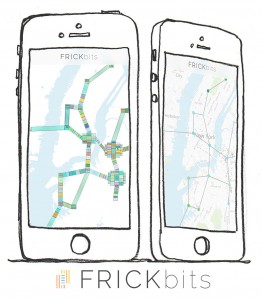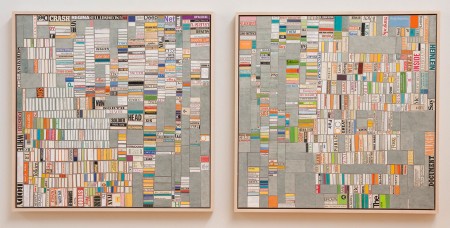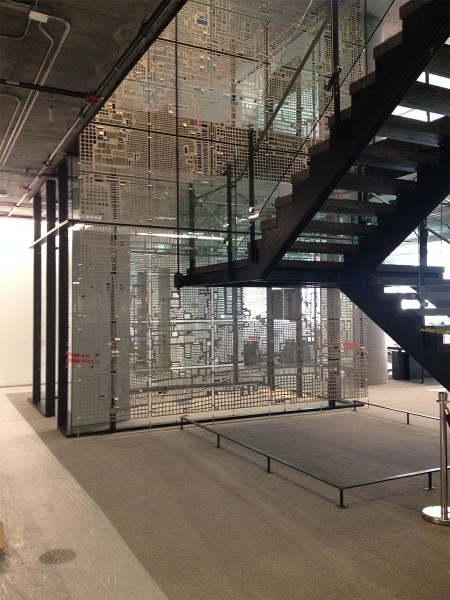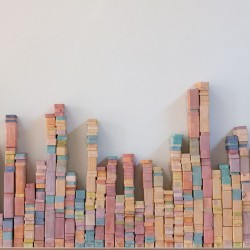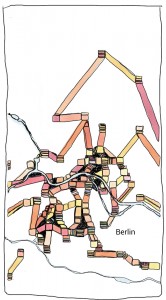Take back my data... will art be the beginning of a data revolution?
/ Yesterday, @PJPangburn sent inteview questions for an article about FRICKBits. What was the lead-up to making FRICKbits, this iphone app that turns data into art?
What is your background in working with data? I know you work with self-tracking data. Do you use other types of data, and how does this manifest in your art?
Yesterday, @PJPangburn sent inteview questions for an article about FRICKBits. What was the lead-up to making FRICKbits, this iphone app that turns data into art?
What is your background in working with data? I know you work with self-tracking data. Do you use other types of data, and how does this manifest in your art?
Measuring sleep was the self-tracking data that really got me hooked. I have a background in engineering and came up through the ranks in tech companies, quit, went back to graduate school in art and melded the two. The intense curiosity for self-tracking started 4 years ago with measuring how people spend time during the day and during the night. I measure a ton of data about myself, and we run the Austin chapter of the Quantified Self. Turns out sleep data is like a fingerprint, everyone is different but uniquely identifiable. It just hit me, self-tracking data is like a pattern portrait of you.
What was the genesis of FRICKbits?
After making a studio full of hand-built patterns from weight, sleep, daily time, internet use, mood, walking and location data I could see we unconsciously have very eloquent rhythms. We recognize something human in these data patterns, and don’t know why it feels familiar. I thought “why can’t everyone have human data portraits of themselves?” Maybe the future is 3D printed textured wallpaper from our data…but in the meantime, how do we do this on an iPhone?
How did you go about conceiving of and designing it?
We tried to do it ourselves using Phonegap, and could see that gorgeous simplicity in an iPhone app is the result of complex code, and serious expertise. Magically I got a call from thirteen23, probably the most talented digital design shop in Texas and we quickly agreed on a trade. Straight swap. They wanted to bring some life to the lobby in their new office, and I needed an iphone app. Quickly, we agreed that location data is the easiest for people to understand, they’re familiar with how a route looks on a map. Poof and off we went.
What software did you use?
FRICKbits runs native on IOS, and there is a lot of performance tuning to make the animation lively and quick.
Is this a way of giving people power over their smartphone and mobile device data?
Right now, it’s a ‘one-sided handshake’, lots of data is tracked about us and it’s hidden or simply not shared. As a data activist, it feels like we’ll get further if we don’t hide, but demand more. Go the other way, and push companies to share your data back with you. I bet people would be astonished with how much is known about them, and the patterns that are extrapolated along with predictions made about their behavior. People look at me and ask “what would I possibly do with my data?” – “Turn it into art!” I say. It’s not so crazy, it’s another version of a data selfie. How else will be begin to shift the equilibrium and have a chance as individuals to fight back, and have a say about the data collected on us? I have a science fiction fantasy that we boost our immune system with mindfulness delivered from data portraits. Art functions as a necessity of daily life.
Do you think that people shouldn't be so afraid of the data they produce?
I think people should be aware of the data they produce, it’s possible the social good will trump privacy. And we’ll begin to get a sense of ourselves, some level of self-awareness. But this is not like eating vegetables, art makes data sticky. We might actually love it.
You talk about fitness data being cold and clinical. I assume other data feels this way to you. How does your app's algorithm make art taht is the polar opposite?
We modeled the algorithm and pattern from my hand-drawn ink and watercolor pattern portraits. It’s a vector based system that mimics squiggly lines and the feel of something hand crafted.
What data can FRICKbits use to make art?
Out of the gate, we are using location data, actually occasional location data so we don’t kill the phone battery. The patterns get better with time, and we don’t want people to turn it off after a few days – so FRICKbits has no impact on battery life. People travel the same places over and over, and it’s quite beautiful the way you cover your route to and from work. Eventually we can draw FRICKbit patterns from any data. I like the idea of using the M7 chip and gathering your speed during the day. Anything that is very indicative of you, but totally unconscious, maybe credit card spending or how often you touch the screen of your phone would be fun data sources.
Any final thoughts on data and art both in the present and future?
I’m very excited about self-tracking data’s ability to predict. Prediction is very close, it’s going to explode people’s minds.
Will artists will profit off their own data after they make into art
Yes, artists will profit from their data, but they will also profit from turning other people’s data into art….cause an app economy will develop around access to more individual personal data. If more people demand their data, I can see a whole app economy around art from data, analysis tools, coaching and research. Lots of small start-ups and apps that could benefit from people giving private access to narrow segments of their personal data. I don’t think it changes the incentives for large corporations like google and facebook to benefit from tracking us, but if they are required to transparently give it back to us, we might find clever ways to get some meaning out of it.


